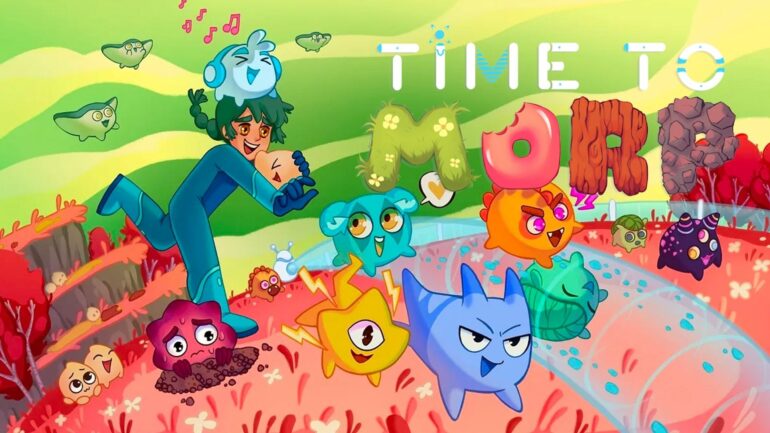Time to Morp appeals to me on so many levels. It’s a colorful, wholesome colony sim game with adorable creatures and a great name. I was immediately drawn to it the second I discovered it existed, and I have wanted to play it ever since. While I unfortunately missed out on playing the game’s free demo, I was lucky enough to get to play the full game for review, and it has proven to be a genuinely engaging experience. Suffice it to say Time to Morp is an almost perfect experience that absolutely lives up to its promised potential.
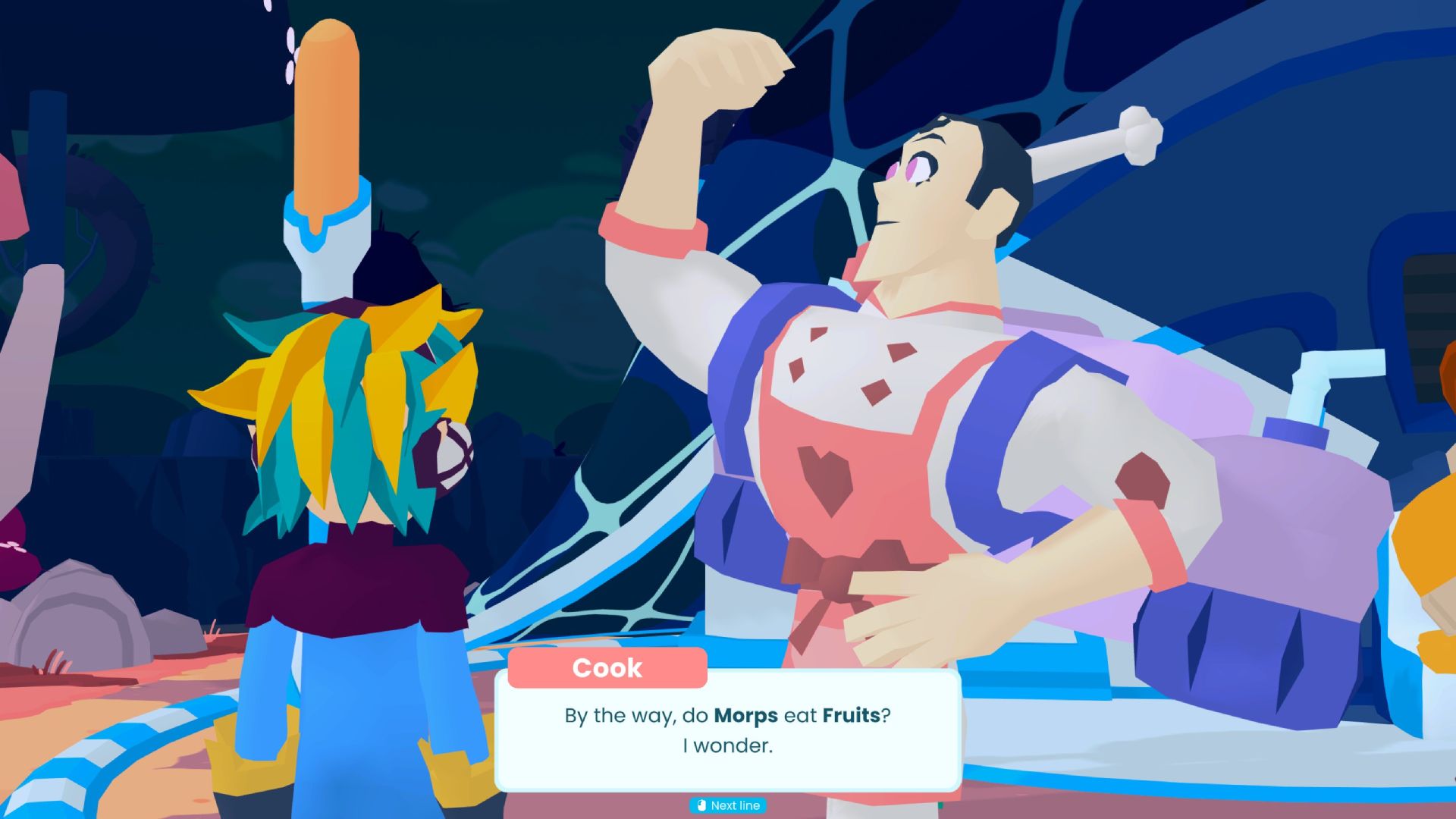
“You’ll need to build up your social standing with your crew by completing a series of fetch quests.”
Time to Morp’s story is a little threadbare, although seemingly intentionally so. It sees a crew of explorers land on a mysterious planet inhabited by cute creatures capable of morphing, which the crew aptly names Morps. From there, players must build a base of sorts, tending to the needs of both the Morps and the crew.
For the most part, the narrative is woven throughout the handful of fun interactions with your crew members. You’ll need to build up your social standing with them by completing a series of fetch quests, each of which is designed around teaching you the next mechanic required to improve your base.
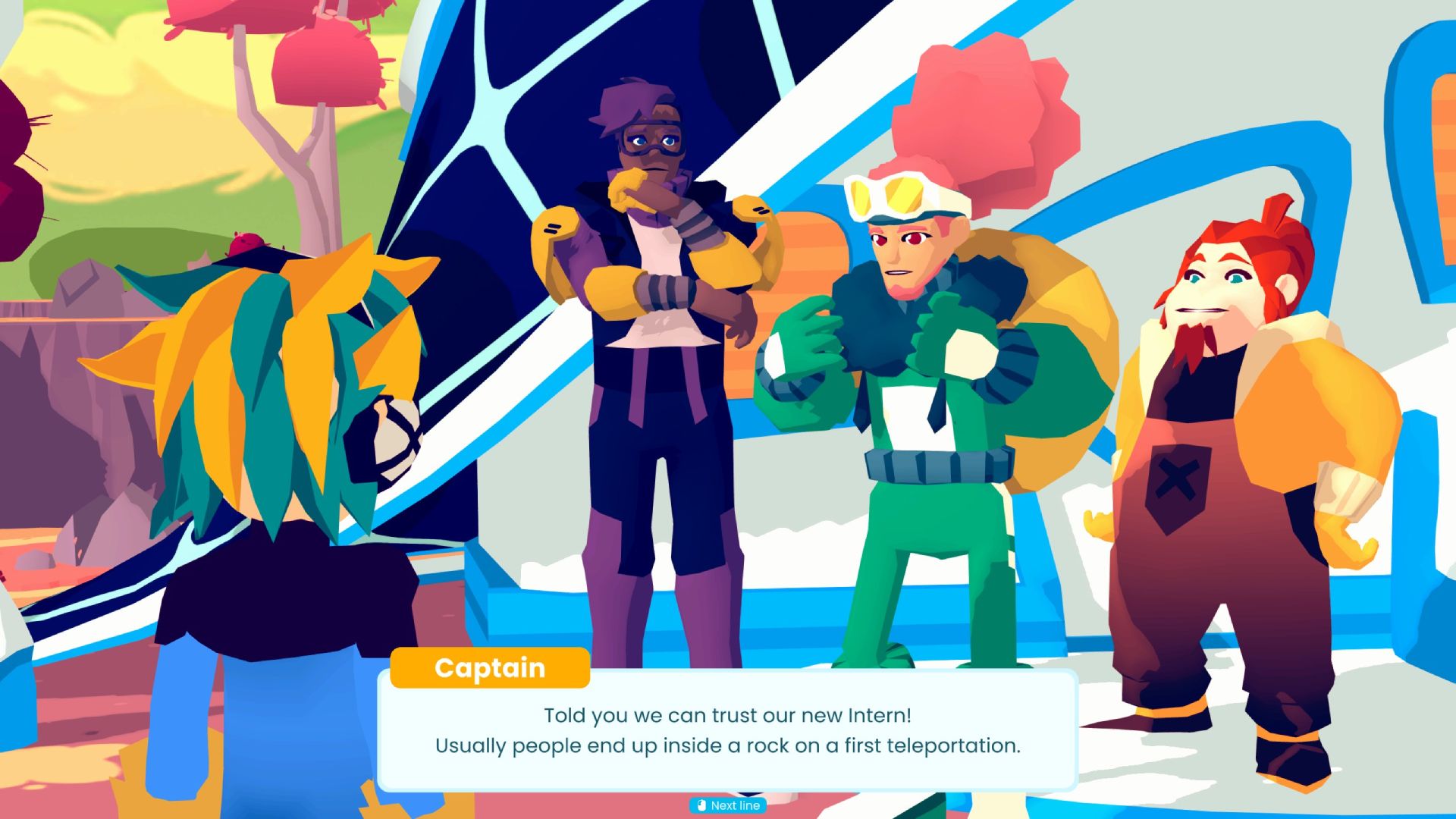
Largely, this was a fun, if not slightly underdeveloped, form of storytelling, one that does its best to offer up quirky personalities to get attached to but doesn’t go quite far enough to make them memorable or endearing enough. You’re hardly going to fall in love with Time to Morp’s cast, perhaps largely due to the fact that they’re not even named beyond their roles. Nevertheless, I was a big fan of the delightful cook, and I would kill for a spin-off cooking game centered around him.
“Where Time to Morp stands out is in its titular Morps, Pokemon-esque creatures that can evolve and adapt to suit your production needs.”
Fortunately, Time to Morp doesn’t really need a good narrative, as its intuitive and creative spin on the colony-sim genre is ambitiously fun enough to carry the experience. Your goal is to automate as much of the production process as possible by using the Morps to generate resources and tech to transform them into usable goods. Of course, to get to this stage, you’ll have to undergo much of the initial tutorializing. Fortunately, the early game is paced perfectly, designed to get you as many upgrades on the tech tree as quickly as possible. It makes for a rather enjoyable sense of progression, one that sees you put into place a strong foundation from which to spend the next 20 hours improving.
Of course, this is nothing new to fans of other automation games. Where Time to Morp stands out is in its titular Morps, Pokemon-esque creatures that can evolve and adapt to suit your production needs. You’ll start off with some basic white Morps, which, when fed certain materials, morph into different colored Morps that gather different resources. You’ll then have to ensure their social, hunger, and comfort needs are met by putting them in the correct themed pens and surrounding them with fellow Morps.
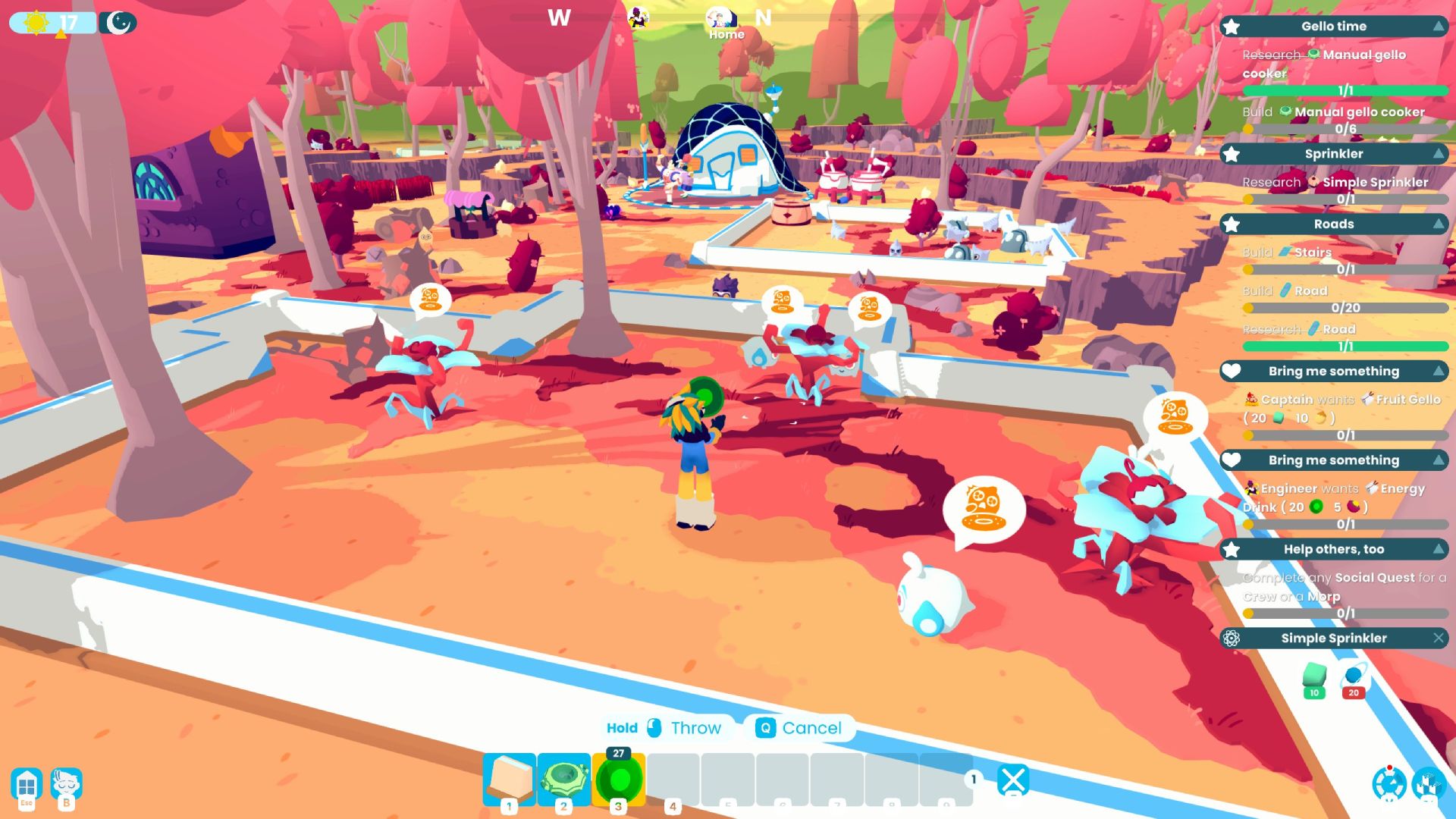
The inclusion of Morps is a novel twist, one that feels somewhat reminiscent of Palworld, albeit a little more refined. They add a lot of personality to an otherwise incredibly polished yet familiar feeling experience, offering a plethora of unique combinations that encourage experimentation with the game’s core mechanics. Fortunately, underscoring all of this is an incredibly well-designed user experience, from the cohesive UI that clearly indicates everything you need to do to the glossary that details every Morp, how to get each one, and lets you scan for certain resources.
“With a little more time in Early Access, it will become the must-have experience for all automation and colony sim fanatics.”
It’s not all perfect, however, as Time to Morp is riddled with small inconsistencies that mar an otherwise extremely enjoyable and engrossing experience. For example, there’s no map, which is incredibly frustrating for an open-world game that lets you place Morp pens practically wherever you want. Exploration is a key and immensely enjoyable aspect of Time to Morp, as there are not only chests to uncover, but you’ll frequently stumble across rare new resources you’ll want to exploit. Naturally, you’ll place new pens and bases wherever you go, but without a map to track their locations, it’s easy to quickly forget where they were.
Additionally, Time to Morp doesn’t always best explain its mechanics, and a fair amount of the early game can feel a little like trial and error. This is, in my opinion, one of the more engaging aspects of automation games, as figuring things out for yourself leads to a genuinely satisfying and moreish experience that ties perfectly into the “just one more unlock” gameplay loop. However, I suspect a lot of people will see Time to Morp’s cozy atmosphere and colorful visuals and may not be quite as prepared for just how complex it can be.
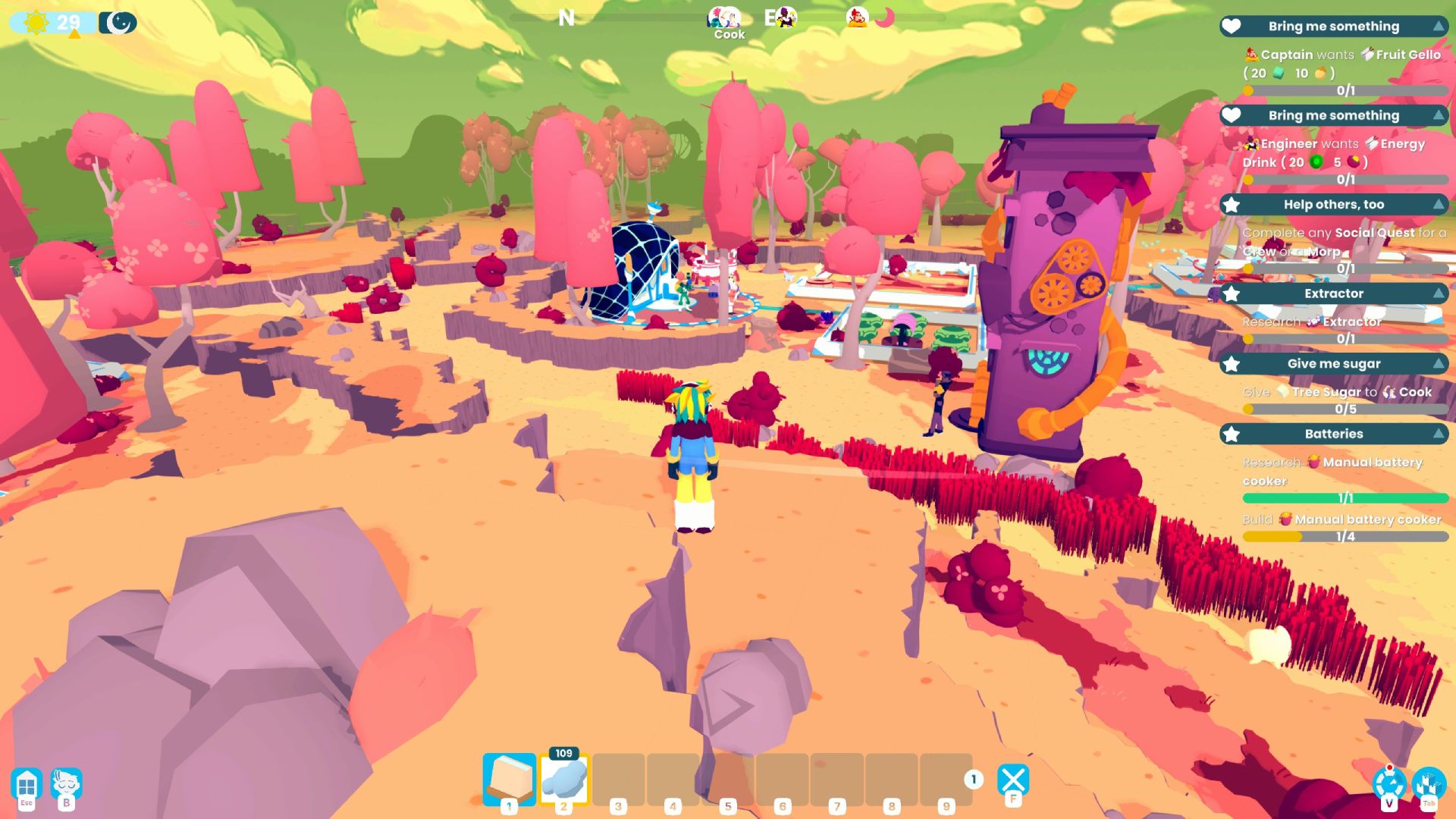
Nevertheless, Time to Morp is an exceptionally enjoyable colony sim experience, one that offers boundless creativity and enough personality to sustain its roughly 20 to 30-hour runtime, depending on how intent you are on automating absolutely everything. Additionally, the inclusion of multiplayer makes it all the more worthwhile, although it never detracts from the pleasure of playing alone. In its current state, Time to Morp’s gameplay loop is endlessly enticing, and with a little more time in Early Access, it will become the must-have experience for all automation and colony sim fanatics.
“Perhaps more impressive is the exceptional sound design, from the welcoming pops and triumphant sounds that play whenever you open a chest to the varied squeaks and growls of the Morps.”
Visually, Time to Morp is a delight, with its rich and detailed world bursting with vibrant colors. The soft, pastel, blocky colors are what ultimately make it feel so cozy, its crimson red forests and swirling green skies encapsulating the wholesome yet alien aesthetic perfectly. Perhaps my favorite aspect of Time to Morp’s visuals is its character designs, both in the crew, whose colorful costumes and distinctive appearances felt reminiscent of JoJo’s Bizarre Adventure, and in your own customizable protagonist.
Time to Morp’s soundtrack isn’t quite as dynamic as its visuals, but it certainly does its part in maintaining the cozy atmosphere. It’s bubbly, upbeat, and delightfully whimsical, although never particularly memorable. That’s not to say it’s bad, more that it fades into the background as you waltz across the gorgeous landscapes in search of new adorable Morps. Perhaps more impressive is the exceptional sound design, from the welcoming pops and triumphant sounds that play whenever you open a chest to the varied squeaks and growls of the Morps. It helps to create an immersive soundscape that engrosses you further into this delightful alien world.
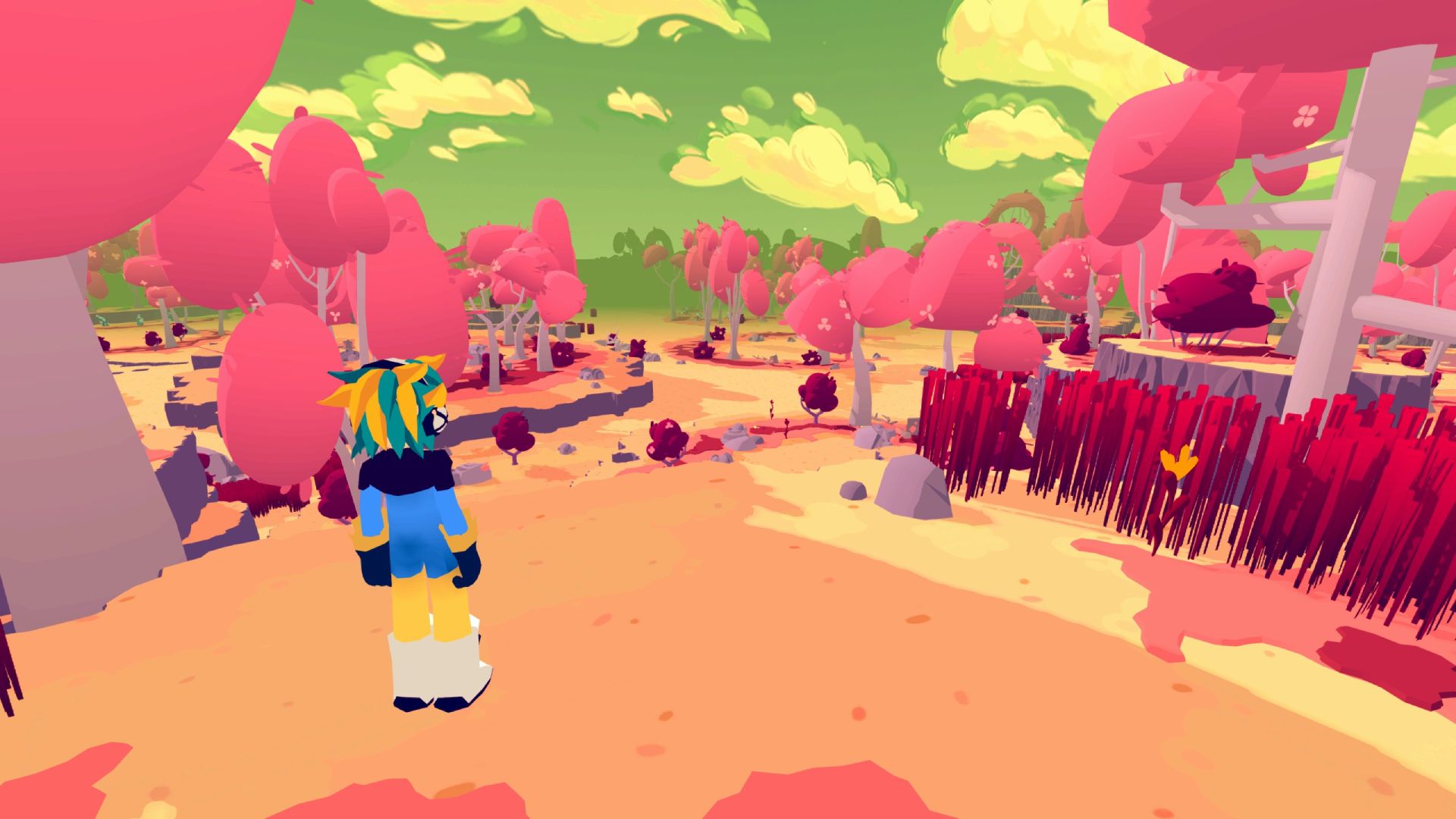
“If you’re looking for a wholesome, accessible yet complex colony sim, then Time to Morp is absolutely for you.”
Time to Morp is a delightful experience, one brimming with creative possibilities and charming personality. While its story and cast of characters aren’t particularly engaging, its gameplay loop of automating absolutely every aspect of production is so endlessly engrossing that you’ll become instantly immersed regardless. The colorful visuals, whimsical soundtrack, and, of course, adorable selection of Morps make Time to Morp a genuinely engaging game that will likely captivate both newcomers to the genre and veterans for many hours. If you’re looking for a wholesome, accessible, yet complex colony sim, then Time to Morp is absolutely for you.
Disclosure: Game Crater was provided the game for this review.






